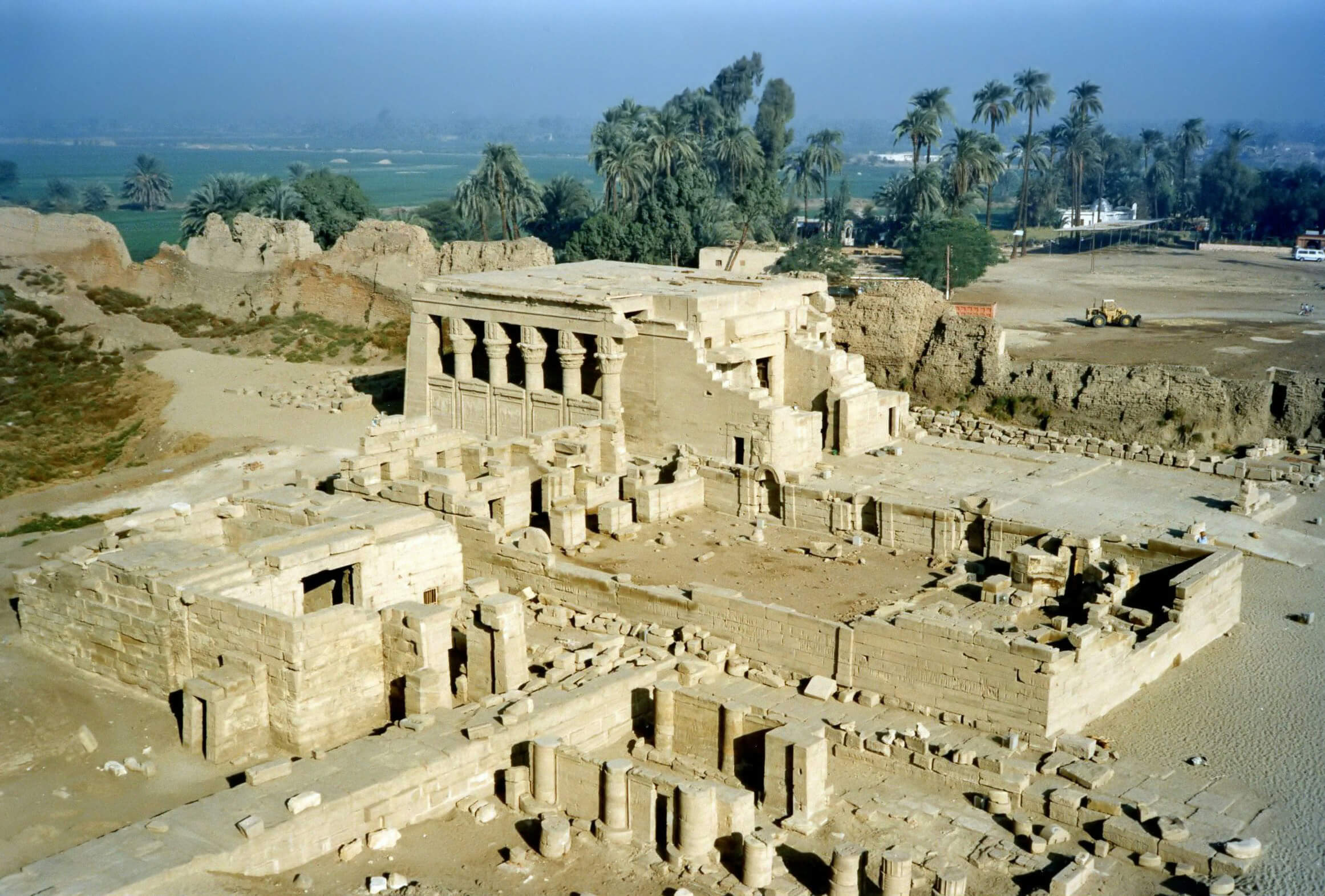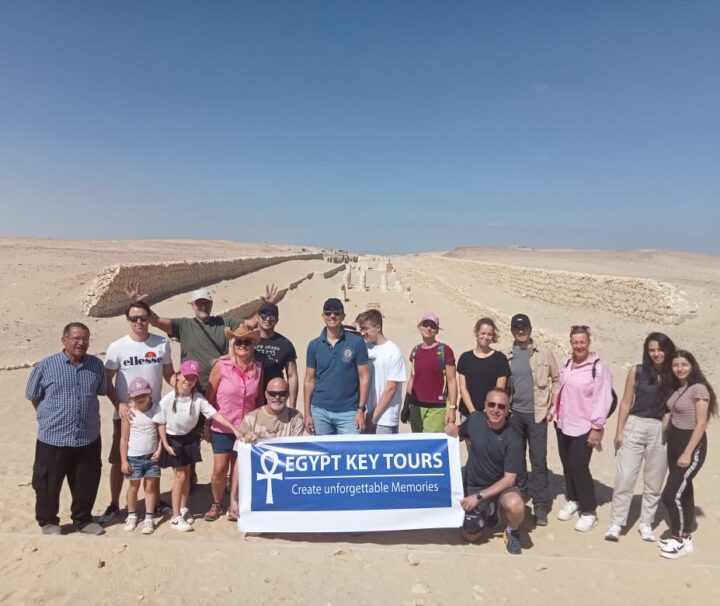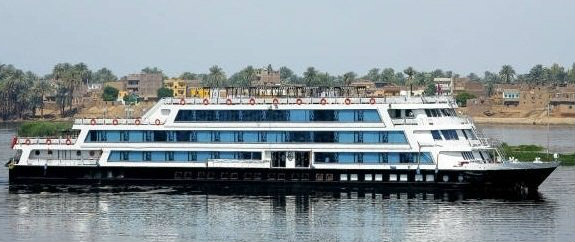Dendara
The large temple complex that dominates the site of Dendara was one of the principal cult centers of the goddess Hathor. It contains a large number of structures from different periods of Egyptian history, but most prominent today is the Greco-Roman Hathor temple, which was largely constructed between 54 and 29 BC. Visitors can wander the columned halls, underground chambers, and stairways of the intact building, which is covered with hieroglyphic inscriptions.
The famous Dendara Zodiac, now in the Louvre, was found in one of the Osiris chapels, located on the roof of the temple; a copy of this relief can be viewed in place of the original today. From the roof visitors also have a good view of the surrounding monuments, which include a Ptolemaic birth house (mammisi) with a shrine of the 30th Dynasty king Nectanebo I, a Ptolemaic chapel of Thoth, a bark chapel of Ptolemy VIII Euergetes, a small Graeco-Roman temple of Isis, a gate from the reigns of the Roman emperors Domitian and Trajan, a Roman birth house, a sacred lake, a sanitarium, Roman cisterns, and a Coptic basilica, all situated within the temple enclosure walls.
The oldest monument found on the site is a Middle Kingdom chapel of Mentuhotep II, which is now in the Egyptian Museum in Cairo, However, according to inscriptions found in the temple itself, Dendara was important from the Predynastic period on.





